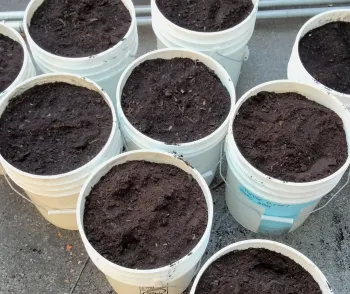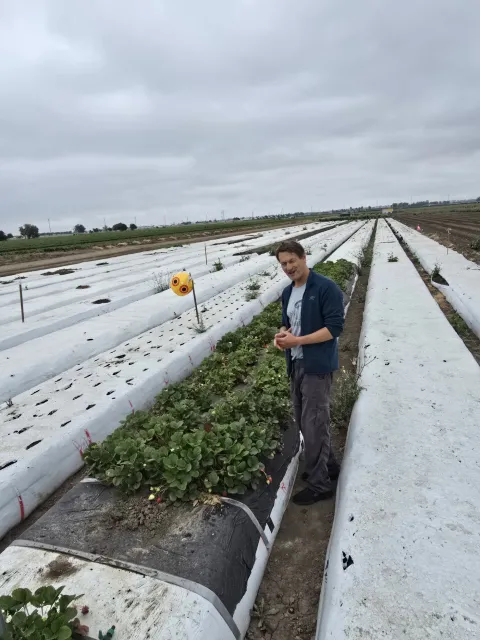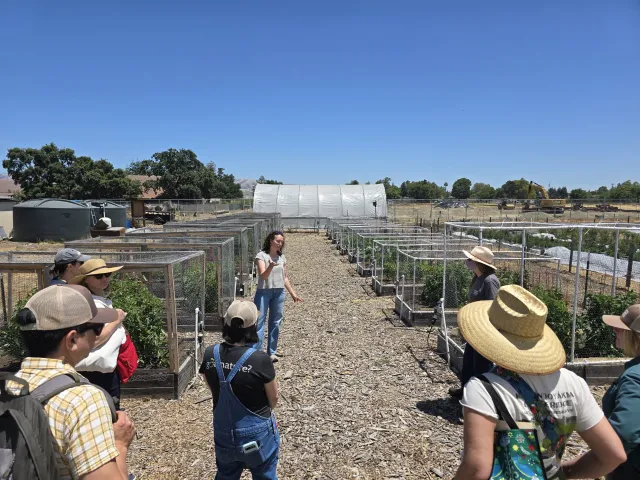Evaluating a role for dehydrated food scraps as soil amendments in achieving organic waste diversion goals
California Senate Bill 1383 (SB 1383) mandates a 75% reduction in organic waste disposal (compared to 2014 levels) to reduce methane emissions from landfills. This ambitious law requires residents, businesses, and local governments to divert organic waste—including food scraps, yard trimmings, and soiled paper—away from landfills.
Composting is the primary method for processing organic wastes, converting them into a stable product that improves soil. To fully meet SB 1383’s unmet demand, California would need to build 75 to 100 new large-scale composting facilities—almost doubling current capacity. However, establishing a compost facility can take 7–10 years due to lengthy permitting processes, regulatory hurdles, and community opposition (often related to odor and air quality concerns). Permitting is even more challenging when food scraps are included, as these facilities face stricter requirements and oversight.
Large-scale food scrap composting presents additional challenges. The high moisture content makes the waste heavy, increasing road wear and air pollution from transport trucks. Food waste is also more prone to producing odors and attracting pests, which limits storage time and necessitates more frequent pickups.
One promising technological solution is the use of machines that dehydrate and grind food waste into a dry powder—dehydrated organic residuals (DOR)—that is about three times lighter and less bulky than the original waste. Unlike compost, DOR is not stable and retains higher nutrient and energy content. When rehydrated, it rapidly degrades, so when added to soil, a waiting period of at least three weeks is best before planting to allow for proper transformation.
At the University of California Agriculture and Natural Resources (UCANR), we are researching best practices for applying DOR to soil to act as a fertilizer, improve soil properties, and control weeds and soil-borne pathogens. At the UCANR Hansen Agricultural Research and Extension Center, Advisor Oleg Daugovish and Specialist Joji Muramoto are investigating DOR as a replacement for expensive rice bran in anaerobic soil disinfestation (ASD). Results from the first year of field trials indicate that DOR can reduce levels of the strawberry pathogen Macrophomina phaseolina and decrease the viability of nutsedge weeds. Meanwhile, Advisors Michael Cohen and Lucy Diekmann at the UCCE Urban Agriculture site in San Jose are studying how various crops respond to DOR amendment and how long the DOR effect persists in soil.
Although our research is ongoing, our findings align with a study published in the journal Environmental Research, which found that incorporating DOR into soil at 2% by weight benefited corn and wheat growth across different soil types, while 5% DOR led to some plant toxicity.

Some of the DOR used for the field trials, kindly provided by Loaves & Fishes Food Kitchen in San Jose.

UC Cooperative Extension Strawberry and Vegetable Crop Advisor Oleg Daugovish at the site of the strawberry field trial at the Hansen Agricultural Research and Extension Center in Ventura County.

UC Cooperative Extension Food Systems/Urban Agriculture Advisor Lucy Diekmann describing ongoing field trials to visitors at the UCCE Urban Agriculture site in San Jose.
